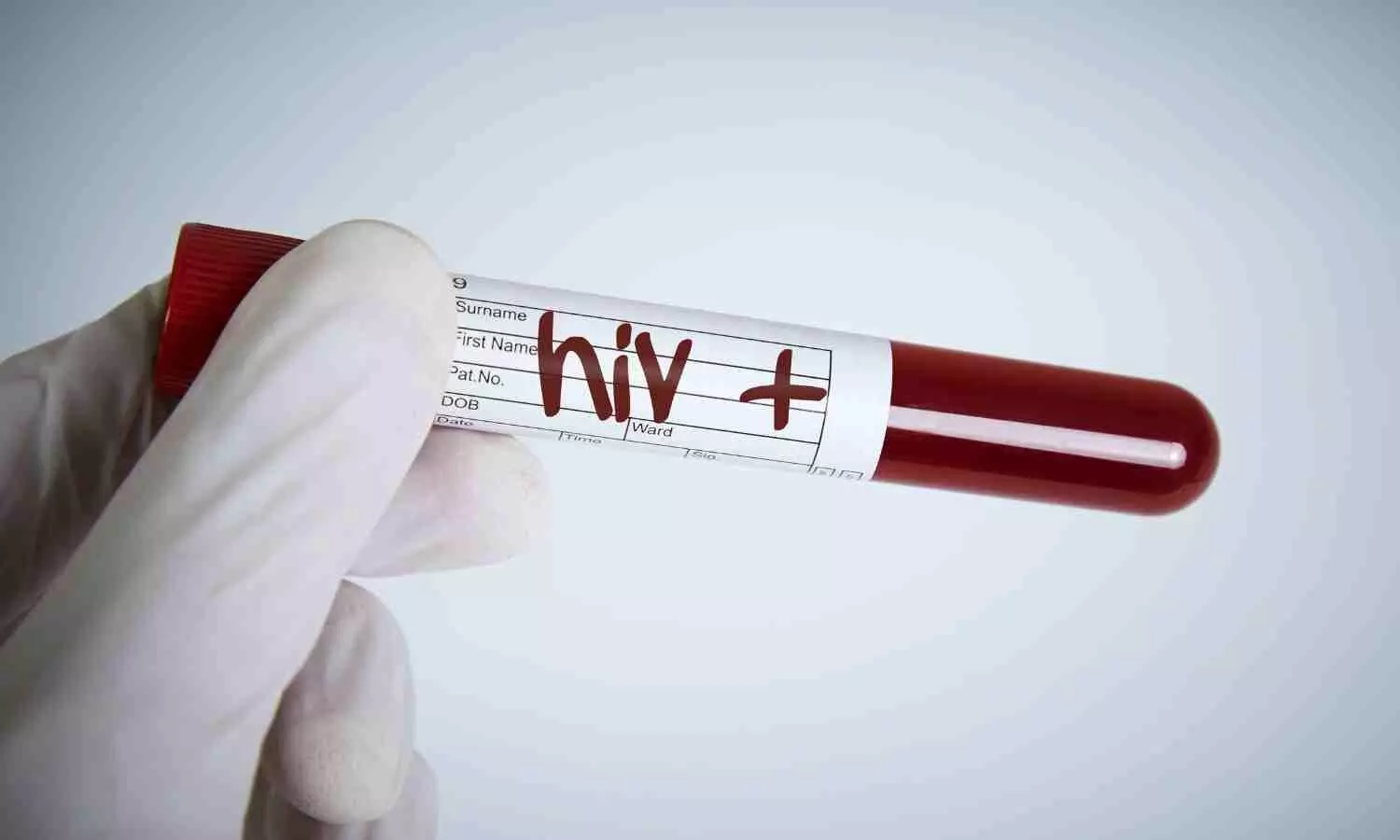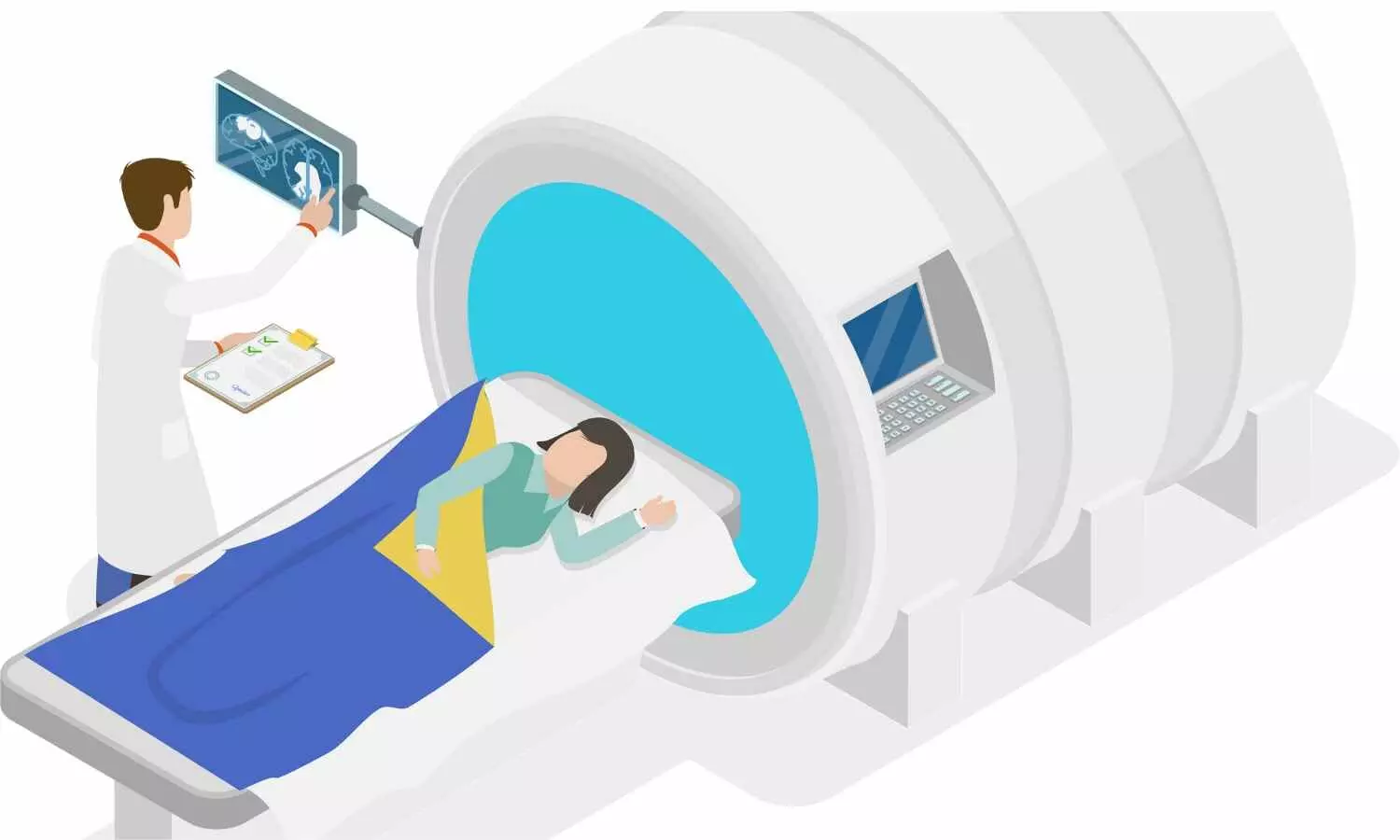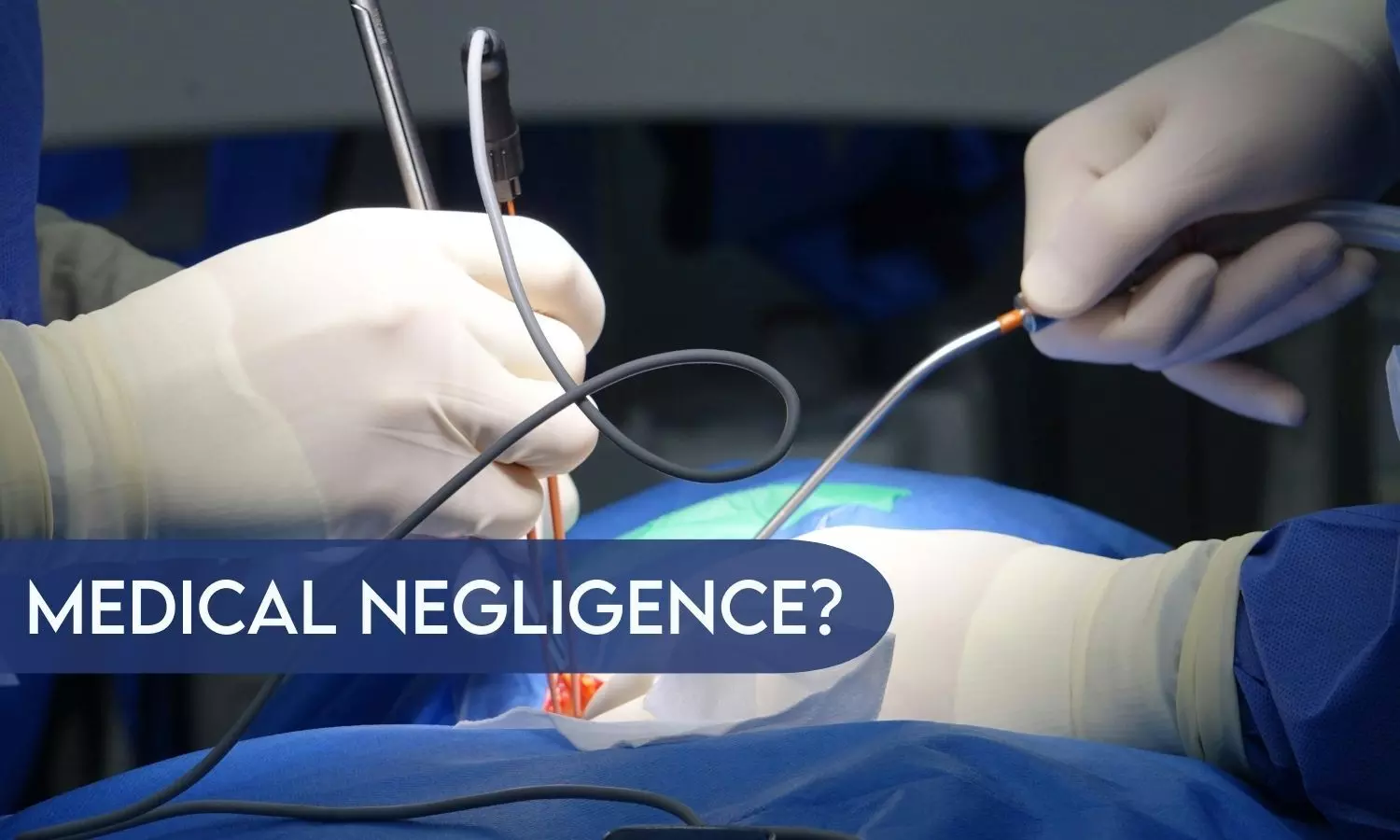Stabilization of neuropathy scores seen after gene editing therapy for rare nerve disease
Powered by WPeMatico
Powered by WPeMatico
Powered by WPeMatico
Powered by WPeMatico

Shimla: In a recent judgment, the Himachal Pradesh High Court has ruled that a postgraduate diploma cannot be considered equivalent to a postgraduate degree for promotion to the post of Assistant Professor under the Himachal Pradesh Medical Education Services Rules, 1999.
After going through the provisions of the rules, the HC bench comprising Justice Vivek Singh & Justice Sushil Kukreja observed, “Bare reading of the provisions includes that prescribed essential qualification is Post Graduation Degree or its equivalent qualification with condition that such candidate must possesses 3 years teaching experience after doing Post Graduation. The word ‘after doing Post Graduation’ relates to the minimum essential qualification, i.e. Post Graduation Degree in concerned speciality or its equivalent. In case, there would have been intention to include teaching experience after doing Post Graduation Diploma, then it would have been mentioned specifically in the Rules that teaching experience can be gained after doing either Post Graduation Decree or Diploma. There is no reference of Post Graduation Diploma in the essential qualification, therefore, meaning of words ‘after doing Post Graduation’ has to be construed as “after doing Post Graduation Degree”.”
“In absence of reference of “Diploma” in the essential qualification at any place, the Post Graduation Diploma cannot be imported for interpreting the word ‘after doing Post Graduation’ as Post Graduation Degree or Diploma or to say that these words include Post Graduation Diploma also in addition to Post Graduation Degree referred in earlier part of Rules providing essential qualification as Post Graduation Degree,” noted the HC bench.
These observations were made by the Court while considering the plea filed by the petitioner, who completed his MBBS in 2006 and after working for a few years, got his MD from Dr. Rajendra Prasad Government Medical College, Tanda in 2024. Thereafter, the petitioner joined as a Medical Officer in Chamba Medical College.
Filing the plea, the petitioner argued that as per the Himachal Pradesh Medical Education Service Rules, 1999, 50% of Assistant Professor Posts are to be filled through promotion of in-service doctors. According to the petitioner, his three years of teaching experience as a Senior Resident, after completing the PG medical diploma, should be counted towards eligibility.
However, the petitioner claimed that the Departmental Promotion Committee ignored his claim and recommended another candidate for the promotion instead.
While considering the plea, the HC bench, after examining the Service Rules of 1999, noted that the minimum qualification for an Assistant Professor is a Postgraduate degree, and since there is no mention of a diploma in the Rules, it cannot be read into them.
At this outset, the Court remarked that the 1999 rule demanded three years of teaching experience after a postgraduate degree, and the teaching experience of the petitioner as a Senior Resident, gained after a diploma, but before his MD Degree, did not satisfy the requirement.
The bench pointed out that in Civil Appeal No. 4415 of 2011 (Manish Sharma’s case) the question considered by the Apex Court was that “whether the PostGraduate Diploma possessed by the appellant was equivalent to the prescribed qualification of a Post-Graduate Degree in Anesthesiology’ and it was observed by the Court that said question was required to be decided by the competent authority in terms of Rules and the appeal was disposed of by the Apex Court directing the respondent-competent Authority to take a decision in terms of applicable Rules.
“The Apex Court had not decided the issue on merit, but had left it open to be decided by Competent Authority. There is nothing on record to say that Competent Authority had decided that Post Graduate Degree and Post Graduate Diploma are one and the same thing,” the HC bench observed at this outset.
Accordingly, the HC bench upheld the decision of the departmental promotion committee, which had declared the petitioner ineligible. The Court noted,
“In view of above observations, we are of the considered opinion that respondents as well as Departmental Promotion Committee had rightly arrived at conclusion that at the time of conducting the meeting of DPC, petitioner was not eligible to be appointed as Assistant Professor Anesthesiology for want of essential qualification provided under the relevant Rules.”
To view the order, click on the link below:
https://medicaldialogues.in/pdf_upload/himachal-pradesh-hc-promotion-303220.pdf
Powered by WPeMatico

New Delhi: The Subject Expert Committee (SEC) on Investigational New Drugs under CDSCO has recommended approval for Zydus Lifesciences Limited to carry out a Phase I Drug-Drug Interaction (DDI) study of its investigational molecule Usnoflast (ZYIL 1) in capsule strengths of 25 mg, 50 mg, and 75 mg.
The decision came at the committee’s meeting on September 4, 2025, held at CDSCO headquarters in New Delhi.
The firm presented its Phase II clinical study report (ZYIL1.23.003, Version 01, dated October 24, 2024) along with the Drug-Drug Interaction Phase I study protocol (C1B05514, Version 01, dated March 12, 2025). These submissions were made in response to earlier recommendations of the 06th/25th SEC (IND) meeting held on July 8, 2025
Usnoflast (ZYIL 1) is an oral small molecule currently under development for potential use in inflammatory and autoimmune disorders. These conditions often require long-term treatment, making it vital to establish how new drugs interact with commonly prescribed therapies. Drug-drug interaction studies are an essential part of the clinical process, helping determine whether a new treatment can be safely combined with existing medications without reducing effectiveness or increasing side effects.
.After detailed evaluation, the committee noted the Phase II outcomes and recommended that the Phase I study be conducted as per the proposed protocol.
Zydus Lifesciences is a drug major known for its innovation-driven approach. The company’s R&D efforts cover a wide spectrum of therapeutic areas, including oncology, metabolic disorders, infectious diseases, and immunology. Its ongoing focus on developing novel molecules has positioned Zydus as a significant contributor to clinical research both in India and globally.
Powered by WPeMatico

Ranchi: The Jharkhand High Court has directed the State Government to formulate and implement comprehensive guidelines for HIV testing and treatment for prison inmates, in accordance with the Human Immunodeficiency Virus and Acquired Immune Deficiency Syndrome (Prevention and Control) Act, 2017.
The Court’s intervention follows concerns raised over inadequate healthcare facilities for prisoners, particularly regarding HIV.
Also Read:4 Tamil Nadu Private medical colleges partner to offer free STD treatment
The Division Bench of Justice Sujit Narayan Prasad and Justice Sanjay Prasad observed, “Section 49 confers power upon the State Government to make out Rules for carrying out the provisions of this Act,” reports the Verdictum.
The Appellant was represented by Advocate Shailesh Kr. Singh, while the Respondent was represented by Additional Advocate General Sachin Kumar.
The Court observed that Section 5 of the Act prohibits the performance of any HIV test on an individual, in accordance with the non-obstante clause, except as provided by the provisions of this Act. Additionally, Section 13 mandates that both the Central Government and each State Government, as applicable, must take all necessary and appropriate measures to prevent the spread of HIV or AIDS, in alignment with the prescribed guidelines.
During the hearing, the court took note of a joint submission from the Additional Chief Secretary of Health and the Principal Secretary of the Department of Home, Jail & Disaster Management. The submission assured the court that the Jharkhand State Government would take necessary steps in consultation with the AIDS Control Society to formulate specific guidelines for HIV testing and treatment in prisons.
Also Read: WHO Issues Updated Guideline on HIV Service Delivery
The Jharkhand High Court has adjourned the matter until November 17, 2025, giving the state government time to develop and implement the guidelines.
Powered by WPeMatico

A new study published in The New England Journal of Medicine showed a link between radiation exposure from medical imaging and a tiny but considerable elevated risk of hematologic cancer in children and adolescents.
Although medical imaging, especially computed tomography (CT), it exposes them to ionizing radiation. There is evidence that cumulative radiation exposure raises the risk of cancer, particularly hematologic malignancies. In pediatric treatment, it is essential to comprehend this relationship to strike a balance between long-term safety and diagnostic advantages. Thus, this study was evaluated the risk of radiation-induced hematologic malignancy in children and adolescents based on medical imaging.
This research tracked a retrospective cohort of 3,724,623 infants born in 6 U.S. health care systems and Ontario, Canada, between 1996 and 2016 until the earliest of the following events: death, cessation of health care coverage, age 21, diagnosis of cancer or benign tumor, or December 31, 2017. Medical imaging radiation exposures to active bone marrow were measured. Continuous-time hazards models were used to evaluate associations between cumulative radiation exposure (as opposed to no exposure) and hematologic malignancies with a 6-month lag.
A total of 2961 hematologic malignancies were identified throughout the course of 35,715,325 person-years of follow-up, mostly lymphoid cancers (2349 [79.3%]), myeloid tumors or acute leukemia (460 [15.5%]), and histiocytic or dendritic cell cancers (129 [4.4%]). Children exposed to at least 1 mGy had an overall mean (±SD) exposure of 14.0±23.1 mGy, whereas children with hematologic cancer had an exposure of 24.5±36.4 mGy.
With a relative risk of 1.41 (95% CI), 1.11 to 1.78 for 1 to less than 5 mGy, 1.82 (95% CI, 1.33 to 2.43) for 15 to less than 20 mGy, and 3.59 (95% CI, 2.22 to 5.44) for 50 to less than 100 mGy, the risk of cancer increased with cumulative dosage.
A higher risk of all hematologic malignancies and the majority of tumor subtypes was linked to the cumulative radiation exposure to bone marrow. Among children exposed to at least 30 mGy (mean, 57 mGy), the elevated cumulative incidence of hematologic malignancies by age 21 was 25.6 per 10,000.
According to our estimates, radiation exposure from medical imaging may have contributed to 10.1% (95% CI, 5.8 to 14.2) of hematologic malignancies in our cohort, with larger risks associated with higher-dose medical imaging procedures like CT. Overall, a dose-dependent increase in the incidence of hematologic malignancies was linked to cumulative radiation exposure from medical imaging throughout infancy.
Source:
Smith-Bindman, R., Alber, S. A., Kwan, M. L., Pequeno, P., Bolch, W. E., Bowles, E. J. A., Greenlee, R. T., Stout, N. K., Weinmann, S., Moy, L. M., Stewart, C., Francisco, M., Kofler, C., Duncan, J. R., Ducore, J., Mahendra, M., Pole, J. D., & Miglioretti, D. L. (2025). Medical imaging and pediatric and adolescent hematologic cancer risk. The New England Journal of Medicine,. https://doi.org/10.1056/nejmoa2502098
Powered by WPeMatico

New Delhi: Unichem Laboratories Limited has received three demand notices from the National Pharmaceutical Pricing Authority (NPPA), alleging overcharging for three of its drugs over various periods between 2013 and 2018. The notices, issued under para 15 of the Drug Price Control Order (DPCO), 2013, carry a total penalty of Rs 1.77 crore.
The demand notices, dated 29th September 2025 and received by the company on 3rd October 2025, cite alleged overpricing for the following periods: July 2013 to November 2018, February 2016 to November 2018 and January 2016 to November 2018.
It is noteworthy that Unichem had sold its domestic formulation business in December 2017, which partially overlaps with the alleged period of violation.
Despite the notices, the company has assessed that the penalties are not expected to have any material impact on its financials, operations, or other business activities. Unichem Laboratories is reportedly evaluating legal options to address the NPPA’s notices.
The disclosure was made under Regulation 30 of the SEBI (Listing Obligation and Disclosure Requirements) Regulations, 2015, to the BSE and NSE, where the company’s shares are listed under the script codes 506690 (BSE) and UNICHEMLAB (NSE).
Pradeep Bhandari, Head – Legal & Company Secretary of Unichem Laboratories, confirmed that the company will act in accordance with the applicable legal framework.
Powered by WPeMatico

Chennai: The Ministry of Health and Family Welfare has confirmed that Coldrif Cough Syrup, manufactured by Sresan Pharma at its Kanchipuram, Tamil Nadu facility, contains diethylene glycol (DEG) beyond permissible limits. Fresh laboratory analysis has declared the drug Not of Standard Quality (NSQ), detecting a toxic 48.6% concentration of DEG, a substance linked to the deaths of at least nine children in Madhya Pradesh’s Chhindwara district and two children in Rajasthan.
Diethylene glycol (DEG) is an organic compound found in household products but also as a counterfeit solvent in medicines. DEG poisonings are characterized by acute kidney injury (AKI).Diethylene glycol (DEG) is nephrotoxic, potentially resulting in high morbidity and mortality. Its main nephrotoxic by-product is diglycolic acid (DGA).
State authorities in Tamil Nadu conducted tests on samples collected directly from Sresan Pharma’s Kanchipuram manufacturing site and confirmed DEG contamination. Earlier, the Madhya Pradesh Food and Drug Administration (MPFDA) had analysed three of 13 collected samples, which were reportedly free of contamination.
“As part of the ongoing investigation, it is further informed that a total of six samples were collected by CDSCO, which were tested, and all 6 were found to be free of DEG/EG. Simultaneously, MPFDA had informed that out of 13 samples collected by their team, 3 were analysed, which were found to be free of DEG/EG. At the request of the MP Govt, Tamil Nadu FDA had taken samples of Coldrif Cough Syrup from the manufacturing premises of M/S Sresan Pharma in Kanchipuram, Tamil Nadu. The results of testing these samples were shared with us late yesterday evening, 3rd October 2025. The samples are found to contain DEG beyond the permissible limit,” the Ministry was quoted as saying by ET.
In response, the Tamil Nadu government has banned the sale of Coldrif syrup across the state from October 1 and ordered withdrawal of existing stocks. Production at Sresan Pharma’s Kanchipuram facility has been suspended pending further investigation. The syrup had been distributed in Madhya Pradesh, Rajasthan, and Puducherry, reports PTI.
As per ANI report, the Office of the Controller Food and Drugs Administration, Madhya Pradesh, issued a formal order stating:
“As you are aware that deaths of children have been reported in Chhindwara District of Madhya Pradesh. In this regard, the Office of the Director of Drugs Control, Tamil Nadu, Chennai has informed that ‘Coldrif Syrup’ has been declared NSQ (Not of Standard Quality) with respect to samples, as it contains Diethylene Glycol (48.6% w/v), a poisonous substance which may render the contents injurious to health. It is directed to stop further sale and distribution of ‘Coldrif Syrup’ immediately.”
The order also directed the halt of sale and distribution of all other products manufactured by Sresan Pharma in the larger public interest.
Authorities have launched risk-based inspections across six states where 19 drug samples were collected. A multidisciplinary panel including experts from NIV, ICMR-NEERI, CDSCO, and AIIMS Nagpur is investigating the samples and other related factors to determine the cause of the deaths, reports ET.
In Madhya Pradesh, authorities have restricted the sale of both Coldrif and Nesto DS syrups. Officials confirmed that 594 bottles had been distributed to three local distributors, with some consignments still pending test results. Families reported that affected children’s initial cold and cough symptoms escalated into severe kidney complications.
So far, nine child fatalities have been reported in Madhya Pradesh, while Rajasthan has recorded two infant deaths.
Meanwhile, the Union Health Ministry has issued an advisory to all states and Union Territories instructing that cough and cold syrups should not be prescribed to children under two years of age. The Directorate General of Health Services (DGHS) has reiterated that cough and cold medicines should not be prescribed or dispensed to children below two years of age. Such drugs are generally discouraged for those under five, and for older children, their use must be strictly based on clinical evaluation, with careful dosing, close supervision, short treatment duration, and avoidance of multiple drug combinations. The advisory also urged that the public be made more aware of the importance of adhering to prescriptions.
Powered by WPeMatico

Alappuzha: In a case of alleged medical negligence, a 58-year-old woman from Kuthiyathodu has accused the doctors in the surgery department of Alappuzha Medical College Hospital of amputating two toes on her right foot without her or her family’s consent.
While the woman and her family claimed that they were not informed about the amputation and came to know only after the surgery, the Alappuzha Medical College Hospital authorities denied the allegations. They stated that her two toes had fallen off on their own due to her severe diabetic condition and that this was noticed while doctors were removing the dressing to check the wound.
Also read- Medical Negligence? HIMS doctors accused of operating on wrong leg
The incident came to light after the woman was admitted to the hospital’s surgical ward on September 27, following the injury caused by a nail that had pierced through her foot. She underwent surgery on September 29, but according to her family, the procedure was done without informing them about the nature of the operation.
Her family stated that they came to know about the amputation only the next day, when senior doctors visited her for a follow-up check-up, as she was complaining of pain, as per a Mathrubhumi news report.
Following the discovery, her son approached the hospital superintendent and the district medical officer and subsequently filed a complaint. In response, the hospital superintendent formed a three-member expert committee to investigate the matter.
However, hospital authorities have denied the allegations of negligence. Superintendent Dr A Harikumar said the patient had a severe diabetic foot infection with poor blood circulation, and her condition was critical.
“Her feet were completely infected, with limited blood flow. While removing the dressing to inspect the wound, her toes fell off. She complained that the matter was not communicated to her properly. An emergency panel was formed, and its report has been submitted. Further action will be based on that,” he told Onmanorama.
Also read- Infant dies after alleged medical negligence at Capital Hospital; protests erupt
Powered by WPeMatico
